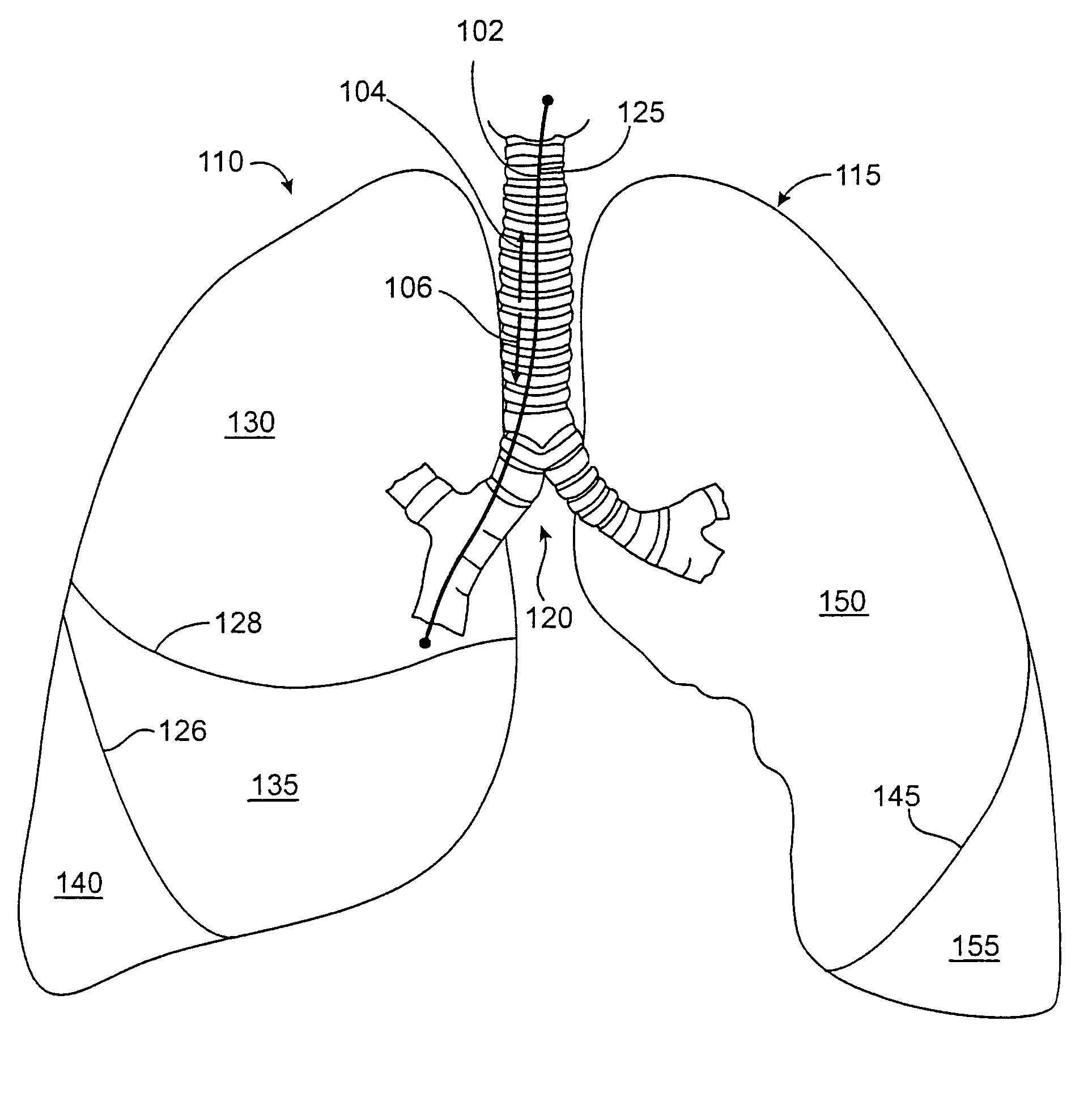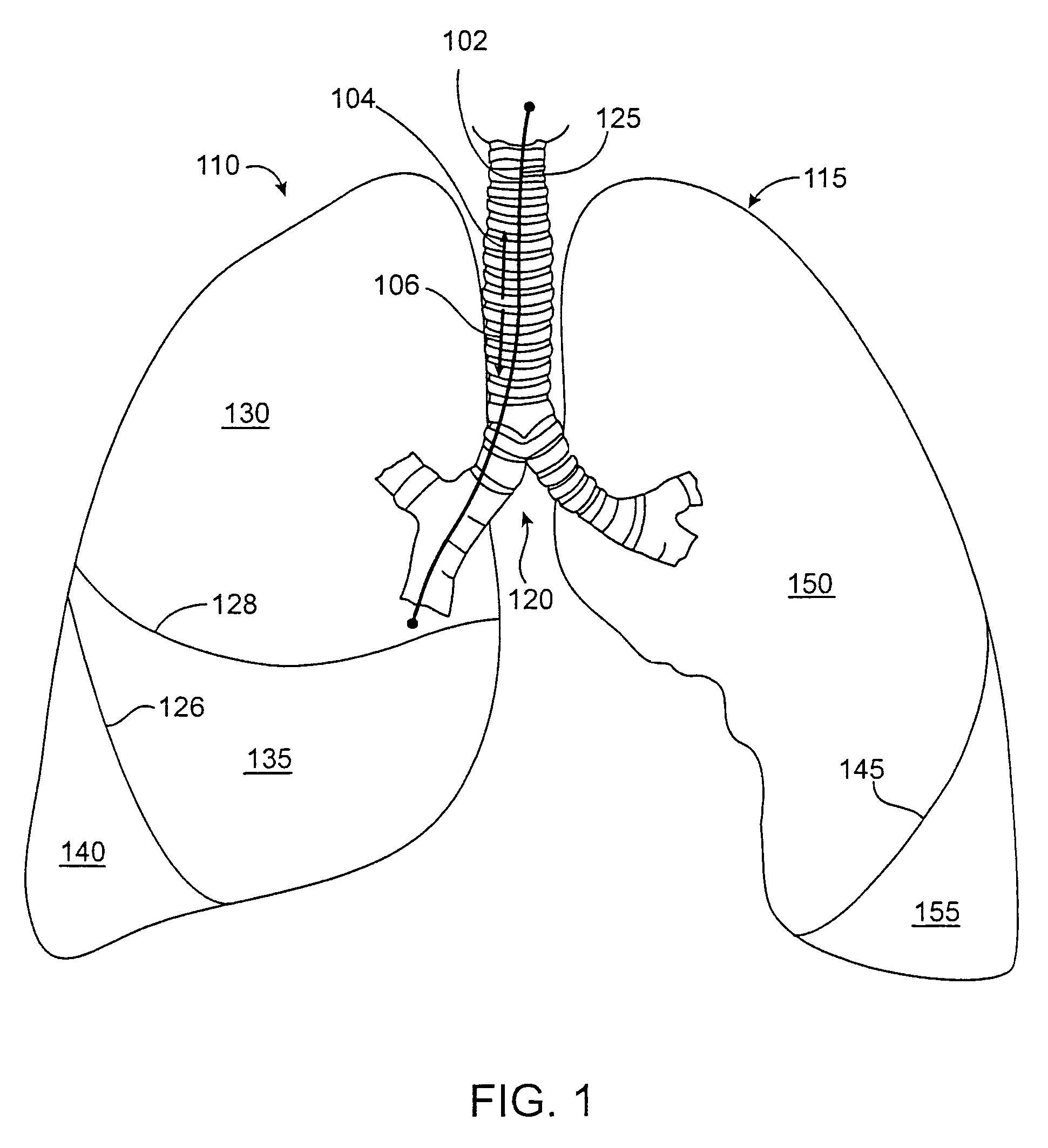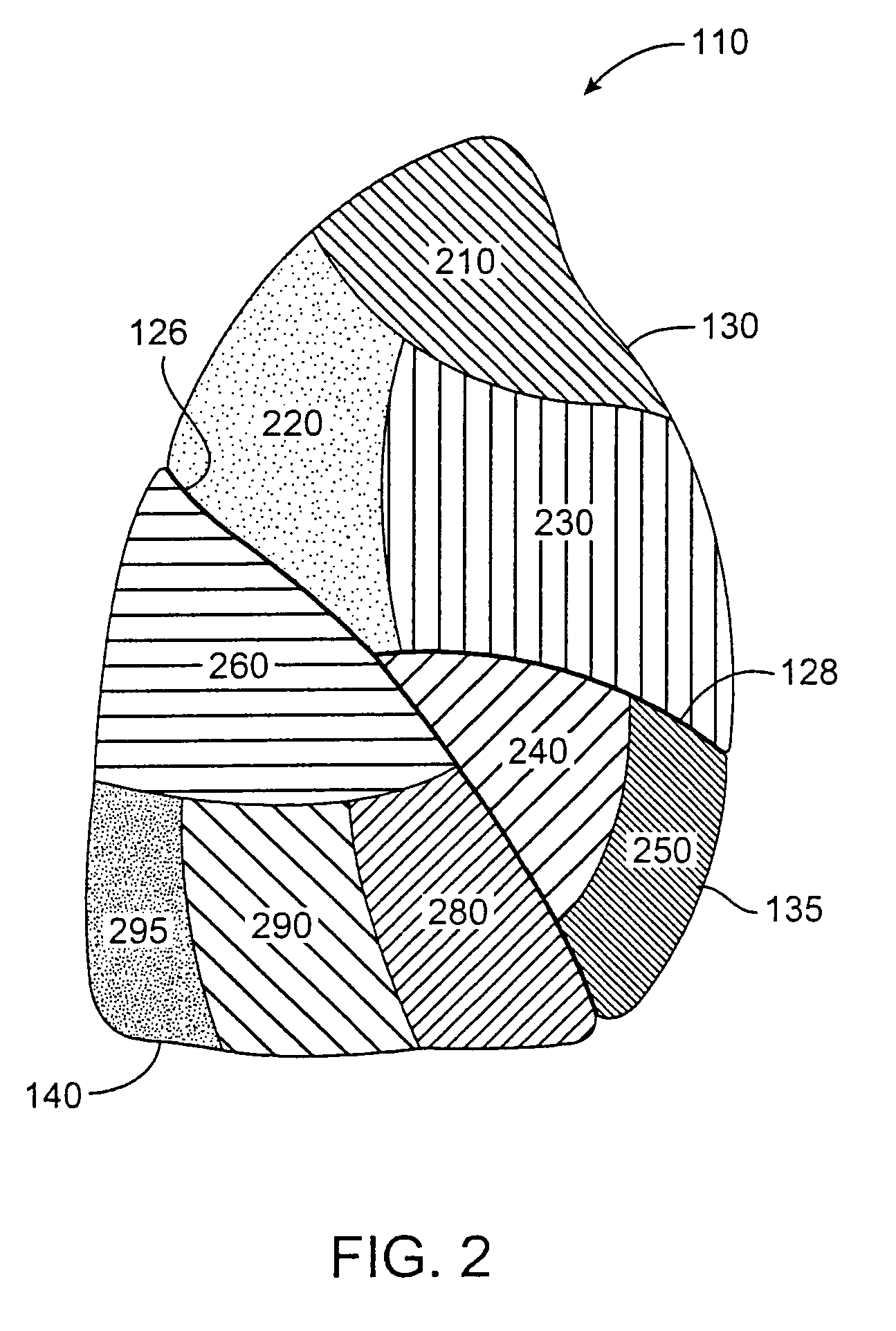Methods and devices for inducing collapse in lung regions fed by collateral pathways
a collateral pathway and lung region technology, applied in the direction of prosthesis, functional valve type, blood vessel, etc., can solve the problems of activity restriction or bed confinement disability, reducing the ability of one or both lungs to fully expel air, etc., to reduce direct fluid flow and reduce collateral fluid flow
- Summary
- Abstract
- Description
- Claims
- Application Information
AI Technical Summary
Benefits of technology
Problems solved by technology
Method used
Image
Examples
Embodiment Construction
[0041]Unless defined otherwise, all technical and scientific terms used herein have the same meaning as is commonly understood by one of skill in the art to which the invention(s) belong.
[0042]Disclosed are methods and devices for regulating fluid flow to and from a region of a patient's lung, such as to achieve a desired fluid flow dynamic to a lung region during respiration and / or to induce collapse in one or more lung regions that are supplied air through one or more collateral pathways. An identified region of the lung (referred to herein as the “targeted lung region”) is targeted for flow regulation, such as to achieve volume reduction or collapse. The targeted lung region is then bronchially isolated to regulate fluid flow to the targeted lung region through bronchial pathways that directly feed fluid to the targeted lung region. If a desired flow characteristic to the targeted region is not achieved, or if the targeted lung region does not collapse after bronchially isolating...
PUM
 Login to View More
Login to View More Abstract
Description
Claims
Application Information
 Login to View More
Login to View More - R&D
- Intellectual Property
- Life Sciences
- Materials
- Tech Scout
- Unparalleled Data Quality
- Higher Quality Content
- 60% Fewer Hallucinations
Browse by: Latest US Patents, China's latest patents, Technical Efficacy Thesaurus, Application Domain, Technology Topic, Popular Technical Reports.
© 2025 PatSnap. All rights reserved.Legal|Privacy policy|Modern Slavery Act Transparency Statement|Sitemap|About US| Contact US: help@patsnap.com



